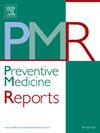Cardiovascular diseases health literacy among Italian navy personnel: A cross-sectional survey
IF 2.4
3区 医学
Q2 PUBLIC, ENVIRONMENTAL & OCCUPATIONAL HEALTH
引用次数: 0
Abstract
Objectives
This study assesses cardiovascular disease (CVD) awareness among Italian Navy personnel, emphasizing the understanding of risk factors. It aims to provide insights that could enhance health education initiatives tailored to military settings.
Study Design
Cross-sectional survey.
Methods
From February 2021 to March 2022, participants were enrolled through opportunistic sampling among Italian Navy personnel. They were surveyed using a structured questionnaire divided into two parts. It was designed to elicit open-ended and closed-ended responses on their knowledge of CVD, its risk factors, and associated diagnostic thresholds. Statistical analyses included logistic regression conducted with R software.
Results
A total of 785 participants were enrolled. The findings indicate a higher recognition of acute myocardial infarction and hypertension compared to other diseases like atherosclerosis and cardiomyopathy. For risk factors, smoking was recognized by 57 % of respondents, while only 60 % correctly identified the diagnostic threshold for total cholesterol. Logistic regression analysis showed significant differences in awareness levels based on sex and rank (p < 000000.1); officers had higher awareness than enlisted personnel (p < 000000.1).
Conclusions
The results demonstrate significant disparities in CVD risk awareness among different ranks and sexes within the Italian Navy, highlighting the need for tailored educational programs. Through specific interventions, Addressing these knowledge gaps could enhance the health outcomes of military personnel and the overall efficacy of Navy health strategies. Furthermore, the work and life environment of the Navy could allow for more in-depth health education initiatives, leading to the adoption of healthier lifestyles by the personnel.
求助全文
约1分钟内获得全文
求助全文
来源期刊

Preventive Medicine Reports
Medicine-Public Health, Environmental and Occupational Health
CiteScore
3.90
自引率
0.00%
发文量
353
 求助内容:
求助内容: 应助结果提醒方式:
应助结果提醒方式:


